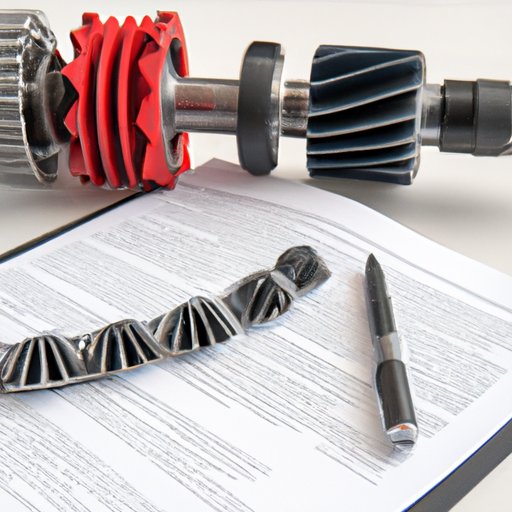Introduction
Transmission replacement is one of the most expensive repairs for your car. Understanding the costs associated with transmission replacement can help you make informed decisions about how best to proceed when it comes to repairing or replacing your transmission. In this article, we will explore the costs of transmission replacement and provide tips on how to reduce these costs.

Comparing the Costs of DIY vs Professional Transmission Replacement
Attempting a DIY transmission replacement can be a daunting task. The complexity of the transmission system means that it can be difficult to diagnose the problem and complete the repair correctly without the right tools and expertise. However, if you are an experienced mechanic or have access to the right tools and information, attempting a DIY transmission replacement may be a viable option.
The average cost of a professional transmission replacement will vary depending on the make and model of your vehicle. Generally speaking, the cost of a transmission replacement ranges from $1,800 to $3,500, with some higher end models costing upwards of $5,000. This cost includes parts, labor, and additional fees such as taxes and shop fees.
Cost Breakdown of Parts, Labor and Other Fees for Transmission Replacement
When considering the cost of a transmission replacement, it’s important to understand the different components of the total cost. The cost of parts needed for transmission replacement will vary depending on the make and model of your vehicle. Generally speaking, parts will cost anywhere from $400 to $1,200.
Labor costs associated with transmission replacement will depend on the type of work being done. If the transmission needs to be rebuilt, the cost could be around $800 to $1,400. If the transmission needs to be replaced, the cost could be anywhere from $1,200 to $2,000. Additional fees such as taxes and shop fees can add up to another $300 to $400.
Analyzing Transmission Replacement Costs Across Different Car Makes and Models
The cost of transmission replacement will vary depending on the make and model of your vehicle. Luxury vehicles typically have more complex transmission systems, which can increase the cost of repair or replacement. Additionally, some cars may require special tools or parts, which can also drive up the cost.
Other factors that can impact transmission replacement costs include the type of transmission (manual or automatic), the age of the vehicle, and the availability of parts. For example, a manual transmission in an older vehicle may be more expensive to repair or replace due to the lack of available parts.
Examining Common Causes of Transmission Failure and Associated Costs
Common causes of transmission failure include worn out bearings, seals, and clutches; low transmission fluid levels; and overheating of the transmission system. Depending on the cause of the transmission failure, there may be additional costs associated with the repair or replacement. For example, if the transmission has been damaged by overheating, the cost of replacing additional parts such as radiators or coolers may need to be taken into account.

Exploring How to Reduce the Cost of Replacing a Transmission
There are several steps you can take to reduce the cost of transmission replacement. First, shop around for the best prices on parts and labor. Prices can vary significantly from one shop to the next, so it’s important to do your research and compare prices. Second, consider buying used parts. Used parts can be significantly cheaper than new parts, but be sure to do your research to ensure the part is in good condition and compatible with your vehicle.
Third, consider attempting a DIY transmission replacement. As mentioned above, this is a complex job and should only be attempted by experienced mechanics or those with the right tools and information. Finally, investigate any potential discounts or specials offered by auto repair shops. Many shops offer discounts for certain types of repairs or services, so it’s worth asking if any discounts are available.

Investigating the Benefits of Regular Transmission Maintenance to Avoid Costly Repairs
Regular transmission maintenance can help avoid costly repairs or replacements in the future. Regularly checking your transmission fluid levels, inspecting the transmission for signs of wear and tear, and having the transmission serviced every 30,000 miles can help keep your transmission running smoothly and potentially save you money in the long run.
Conclusion
Replacing a transmission can be a costly endeavor, but understanding the costs involved can help you make informed decisions about how best to proceed. The cost of a transmission replacement will vary depending on the make and model of your vehicle, as well as the type of work being done. Additionally, there are several steps you can take to reduce the cost of transmission replacement, such as shopping around for the best prices and investigating any potential discounts or specials offered by auto repair shops. Finally, regular maintenance of your transmission can help avoid costly repairs in the future.
(Note: Is this article not meeting your expectations? Do you have knowledge or insights to share? Unlock new opportunities and expand your reach by joining our authors team. Click Registration to join us and share your expertise with our readers.)
